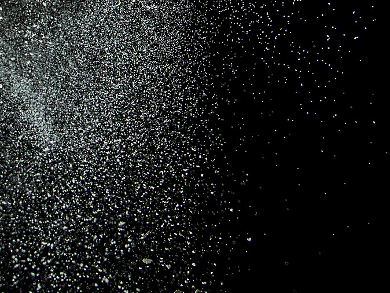Nanoparticles composed of noble metals and their respective oxides are often deposited onto different metal oxide supports. The particles can act as performance enhancers in different catalysis applications. The reason for this increased performance is known to be the presence of strong metal–metal oxide or metal oxide–metal oxide interactions.
Christopher S. Blackman and Min Ling, University College London, UK, have used an aerosol-assisted chemical vapor deposition (AACVD) method to construct nanostructured thin films of noble metal (Au, Pt, Pd or Ru) and metal oxide (PdO or RuOx) nanoparticles on 1D WO3 nanorod arrays. The researchers synthesized the nanorod arrays by creating an aerosol out of W(CO)6, acetone, and methanol using an ultrasonic humidifier. This then became the deposition medium during the AACVD process, which yielded the nanorods after annealing at 500 °C. The nanoparticles were grown directly on top of the nanorods using AACVD, followed by further annealing treatments.
The researchers found that the size of the nanoparticles was governed by the deposition time and ranged between 1.6 and 7.3 nm, at 0.5 to 36 min, respectively. The photocatalytic properties of the nanoparticle-loaded nanorods were optimized, and 3.0 nm gold nanoparticles (1 min deposition time) showed the best performance for the degradation of stearic acid. This optimized catalyst was found to be three times more active than gold nanoparticles with a diameter of 6.8 nm (20 min deposition time).
- Gas-phase synthesis of hybrid nanostructured materials,
Min Ling, Christopher S. Blackman,
Nanoscale 2018.
https://doi.org/10.1039/c8nr06257a



![Synthesis of [c2]Daisy Chains via Mechanochemistry](https://www.chemistryviews.org/wp-content/uploads/2025/04/202504_RotaxanesWithSolidStateMechanochemistry-125x94.png)
